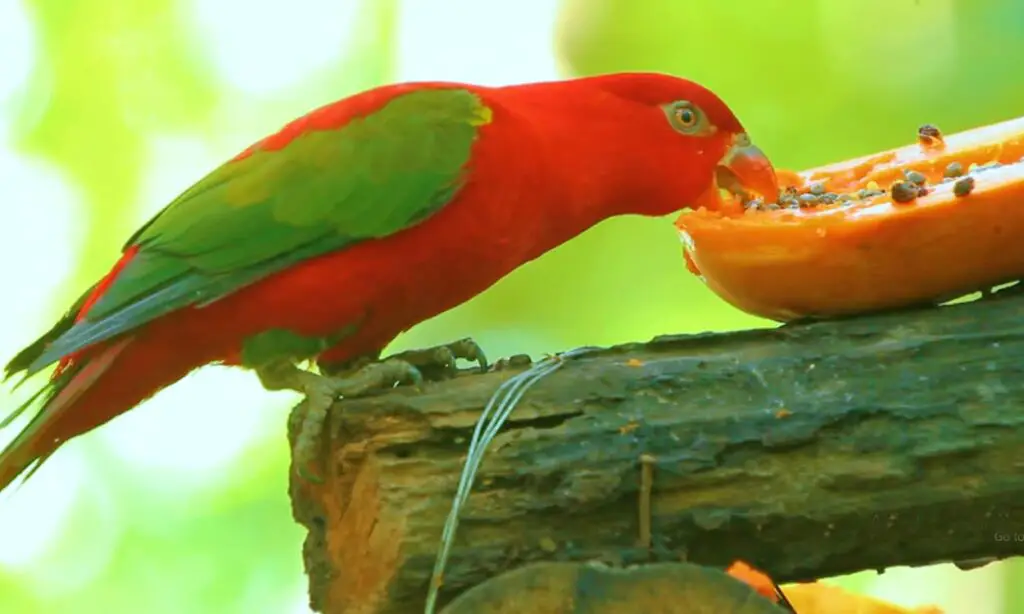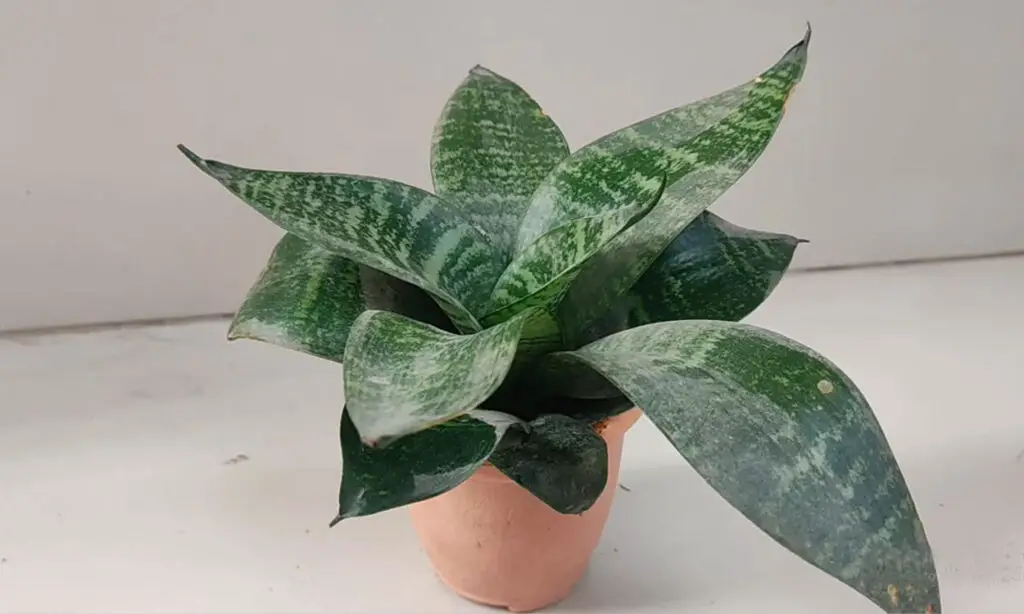Is Snake Plant Safe for Birds? A Comprehensive Guide
Bird lovers like me often find themselves struck by the beauty of indoor plants. The lush greenery and the vibrancy they bring to any space are undeniable.
However, as a responsible pet owner, it’s crucial to consider the aesthetic appeal of plants and their impact on our feathered companions. After looking around, I discovered that snake plant contains saponins, which can be toxic for birds to a certain extent.
This wouldn’t stop me from having a green, fresh environment. So, I again began researching and found out how to maintain birds and plants in the same house. In this article, I have discussed those findings.
I’ve also elaborated on why snake plants are not entirely safe for birds. Overall, I have explored the different aspects of snake plants, their potential effects on avian friends, and how to make informed decisions about their presence in your environment.
Related post-Is Pothos Plant “Bird Safe?” Let’s Find the Answer!
Understanding Snake Plants and How they Affect Our Feathered Friends
Before diving into all the intricacies of snake plants and their interactions with birds, let’s understand what the snake plant or Sansevieria trifasciata is about. This plant is often called the “mother-in-law’s tongue” due to its pointed leaves.
However, the snake plant is a popular choice for indoor greenery due to its classy look. Its striking appearance and reputation as an air purifier have made it a staple in many households, including mine.
Now, let’s get to evaluating the safety of a plant for birds. In such consideration, it’s essential to keep in mind its toxicity. As mentioned before, snake plants contain saponins.
It’s a naturally occurring compound that can harm animals, including birds. Saponins are also why the plant tastes bitter and can cause gastrointestinal distress if ingested. It all indicates the level of toxicity of this plant.

Snake plant toxicity is commonly discussed among cats, dogs, and other mammals. However, its impact on birds should be noticed. Birds own a really delicate digestive system. Even small amounts of toxic substances can have adverse effects, collapsing the bodily system as a whole.
In the wild, birds show remarkable instincts, especially when selecting foods and materials for their nests. However, in captivity, they might have different discernments.
At home, they learn to rely on their owners for food and trust whatever the owner provides. This is why snake plants can pose a risk to birds, especially those young birds prone to nibbling on plants or exploring their environment with their beaks.
Ingesting snake plant leaves can lead to severe gastrointestinal issues in birds. Symptoms of this condition include vomiting, diarrhea, and discomfort.
The saponins in the plant can irritate the delicate lining of the avian digestive tract, causing inflammation and potential long-term harm. I have even seen a bird madly plucking its feather after biting a young snake tree.
How to Create a Safe Living Environment for Birds and Snake Plants?
When harmonizing my love for my feathered friend and green buddies, a carefully thought-out strategy is critical. My birds’ health and well-being will always be my top priority. Still, I also can’t help but keep my house decorated with greenery.
But as you can see, it can get problematic sometimes. However, I have found certain ways to create a safe living environment where birds and snake plants can coexist harmoniously. So, let’s explore those comprehensive approaches to creating a safe living environment.

Elevated Placement
I found out that it’s actually a practical solution to place my snake plant in an elevated position. This simple method prevents direct access to the plant by my birds and adds an interesting vertical element to my space.
In simple words, it looks good, and it works. I utilize an elegant macramé plant hanger to suspend my snake plant near the window. This keeps it out of reach, even when my birds are on their perches.
Physical Barriers
In some situations, creating an elevated space for your snake plant is impossible. What if the elevated space is in complete shade! In such cases, I opt for another simple solution.
I create physical barriers around my snake plant, effectively preventing my birds from accessing the plant. So, I’ve basically installed a custom-made mesh enclosure around the plant.
The mesh has small enough gaps to prevent my curious budgies from poking their beaks through. This serves as a clear visual reminder that the plant is off-limits.
But if your birds stay in their cage most of the time, you don’t have to worry about anything.
Observation and Training
I believe that, as a bird owner, I must understand my birds’ behavior. So, I spend time observing their interactions with the environment. If I notice them showing interest in the snake plant, I employ positive reinforcement training techniques.
For example, I offer treats and praise when they explore other areas of the room, gradually redirecting their attention away from the plant. This way, I have programmed them to habit in a certain way that keeps them and my plants safe from each other.
Bird-Safe Alternatives
In the case of one of my friends, nothing was working. Even creating a physical barrier proved to be futile. I thought about what could be done in this situation and found the simplest solution.
What if you don’t keep a snake plant? I recommended him opting for bird-safe plants. Such plants provide the best of both worlds. For example, furcraea foetida resembles snake plants but isn’t as toxic.
This offers a lush indoor environment and the well-being of my birds as well. I’ve transformed a corner of my friend’s bird room with various bird-safe plants. Apart from furcraea foetida, I’ve included spider plants, a bamboo palm, and a pot of basil.
This mini-indoor garden elevates the room’s aesthetics and provides the birds with enriching sensory experiences. They also play in the garden as well.

Strategic Arrangement
After struggling with birds and snake plants for a while, I thought of thinking out of the box, and that’s when it hit me: I can just rearrange everything in a way that’ll establish a gap between my birds and the plants.
So, while arranging my indoor space, I ensured ample physical distance between my birds’ perches and the snake plant. This prevents accidental interactions and minimizes the likelihood of nibbling.
I have also surrounded the area of the plants with the toys my birds love most. This way, when they come near the plant, they get captivated by their toys and no longer advance.
This is how Doesn’t create a natural barrier that promotes coexistence by strategically organizing my room layout.
Regular Monitoring
I can’t emphasize enough just how crucial consistent vigilance is. But, unfortunately, it’s not always possible to do so because of everyday chores and hassles. This is why I set a monthly reminder to inspect the mesh barrier I’ve placed around my snake plant.
I just want to ensure that my lovebirds don’t loosen the mesh because it can lead to unwanted interactions.
These strategies may not look much. But, by integrating these strategies into my living space, I’m taking a holistic approach to bird and plant coexistence.
My efforts to create a secure environment proved fruitful only because I researched before taking every approach.
Final Verdict
As a devoted bird enthusiast, I’ve always strived to create an environment that ensures the comfort of my avian friends.
While the allure of a snake plant’s unique appearance is undeniable, I’ve realized that the potential risks it poses to birds outweigh its aesthetic appeal. To avoid the adverse effects, I adopted multiple safety features and suggest others do the same.
For example, I always recommend bird-safe plants for bird owners. These plants, too, add colour and vibrancy to spaces, and that too without compromising the health and happiness of my feathered companions. My bird’s physical condition is basically my primary concern.
Their digestive systems’ delicate nature and curious behaviors make them susceptible to toxication.
But, by implementing thoughtful strategies to prevent contact and ingestion, I found that it’s possible to create a harmonious living environment that houses both my birds and my love for indoor plants. It’s all about making informed decisions that promote the well-being of pets and plants.
